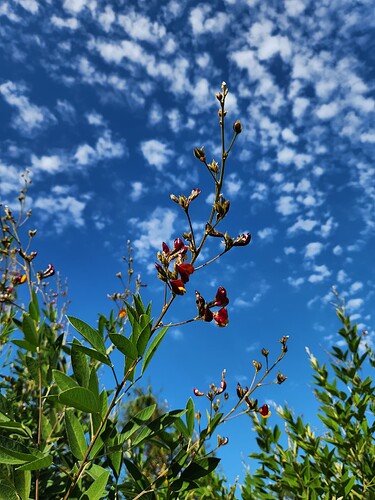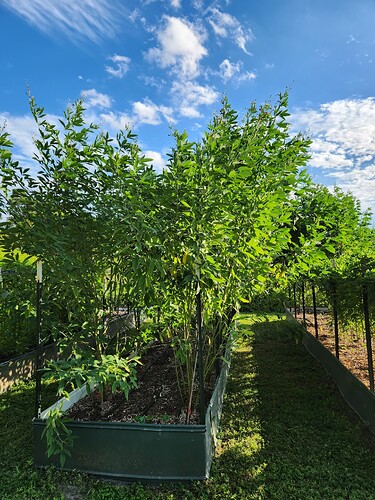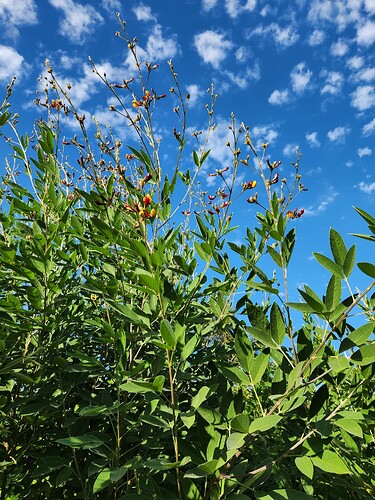As our long duration pigeon peas here at NARIC set flowers at last, I’m reminded of a conversation I’ve had with a few network members about saving seeds of this crop.
Pigeon peas, Cajanus cajan, are members of the family Fabaceae and have perfect flowers, meaning they can self-pollinate. However, ECHO North America has always adopted an isolation distance of 800m for pigeon pea to prevent cross-pollination, meaning we can only grow one variety on the farm at a time. Given that pigeon peas are one of the most popular items on our catalog and we maintain many varieties, this restriction makes it difficult for us to both maintain sufficient seed stock and trial new varieties.
There is not much published research on isolation distances for many crops, especially ones we would consider “underutilized.” However, a few network members have shared anecdotal experience that smaller isolation distances for pigeon pea - closer to just 200m - are indeed sufficient for variety maintenance. And while pigeon peas have captured our curiosity in this area, this conversation is not unique to them - we wonder this same thing about many other crops such as lima beans, winged beans, scarlet runner beans, eggplants…
Do you have experience with variety maintenance, or even breeding? What observations have you made about rates of cross-pollination between varieties of self-pollinating crops? What resources do you use to plan for proper isolation?
1 Like
This doesn’t answer your actual question…and I don’t mean to negate the value of maintaining distinct varieties. But for me, focused on homesteading and local community food sovereignty, it’s felt quite liberating to embrace the adaptive gardening/landracing approach, planting a diversity of genetics, encouraging plants to cross pollinate, and saving and replanting seed from plants who succeed in my conditions, Once I have a genetic pool of plants who thrive here, I can select for tastier fruit, or longer shelf life, or smooth skin for easy processing, or thick skin that minimizes damage by critters, or whatever is important to me.
I do have several pigeon pea varieties isolated, but only by 50m. I’m content to pay attention to resown plants to cull any if they seem to have departed from the variety they should be, and when I share seeds I can just let people know the isolation distance I used.
My main pigeon pea effort is a “grex” planting area where I’m planting all the varieties I can get, letting them cross pollinate, and resowing from the plants I like.
1 Like
Hi Norris, thanks for your response. Landrace gardening is definitely on our radar and something that we are hoping to provide more resources and support for in the near future. Obviously as a seed bank/gene bank it’s still important for us to maintain pure varieties, but there is clearly so much value in diverse mixes and adaptive gardening as well. Going to Seed is doing incredible work in this realm so I’m glad you are familiar with them!
As for your isolation distance of 50m, this is more or less what I’ve heard from some other network members. I’m curious to know what your culling rates tend to be and how “strict” you are with certain traits as you’re roguing out plants. Pigeon peas tend to have a fair amount of phenotypic variation in my experience even within a “pure” variety which often leaves me a bit unsure of when “unacceptable” levels of crosspollination are actually occurring.


